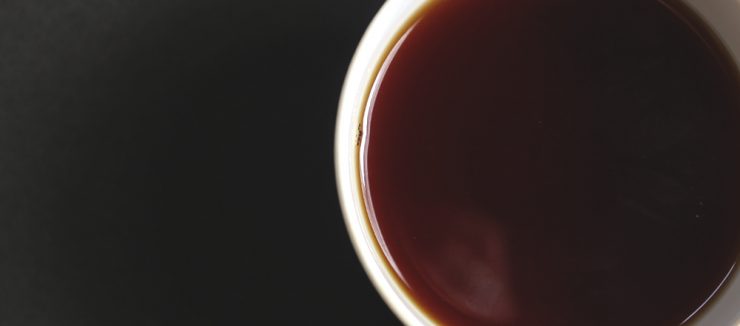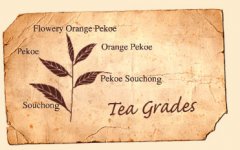The difference between Kenyan first-class black tea and second-class black tea how about Kenyan black tea
Kenya is a great country worth visiting. Many people like to travel to Kenya and enjoy the resorts, scenery and wildlife there. However, there are many other things that make Kenya a beautiful place. Kenya has made good progress in developing its agricultural products, especially the tea industry. For Kenyan farmers, tea is a valuable cash crop, and for many of them, tea is the only basis of their annual income. For a long time, tea has been regarded as a healthy drink. This is a natural drink that contains no additives, preservatives or artificial colors, and no cholesterol when it contains no milk or sugar. It is also famous for its bright, attractive colors, fresh taste and the texture of fragrant leaves. African tea, traditionally used for blending, is now emerging in specialty markets with its own rights. Tea was first introduced to Kenya in 1903 and was grown in Limru. However, the commercialization of this kind of tea began in 1924, and since then, Kenya has claimed to be a major producer of black tea. Kenya is one of the largest tea producers and exporters in the world. Kenya is currently the third largest tea producer and exporter after China and India. Like tourism, horticulture and Kenyan coffee, Kenyan tea is one of the country's largest sources of foreign exchange earnings, and the task of managing small-scale farmers falls to KTDA. At present, the Korea Tea Industry Association has 62 tea factories, serving more than 500,000 small farmers with a planting area of more than 100000 hectares. Of all the tea produced in Kenya, KTDA produces more than 60 per cent, and the rest is produced by large estate producers. Classification of tea Kenyan tea is divided into two categories. There are some large privately owned plantations, such as the African Highlands, Brookbond and limited production estates in the east. There are also individual factories run by some agents. These privately owned plantations are called the Kenya Tea Farmers' Association. Carejo in the East African Rift Valley is their base, and they control nearly 40% of Kenya's tea. The second category is the small farmers who form co-operatives. The Kenyan government has built large factories for them. 60% of Kenya's tea is controlled by these farmers. Small-scale farmers also produce the best grade of tea. The Kenya Tea Development Authority manages their tea. They have a total of 45 factories. Kenya's best tea grows in the eastern part of the Great Rift Valley, the highlands of Kenya. There are two best seasons in Kenya, both of which are long rainy seasons. In these seasons, the output of tea is so high that sometimes the factory cannot handle such a large quantity. The achievement of tea when tea is processed, it is divided into different grades:

1. The main grades include: BP1 (Breaking White Oil 1), which accounts for about 12-14% of the total output. It has the largest size. This wine is a little light-bodied, but it has encouraging aroma characteristics. PF1 (Pekoe Fanning 1)-this is about 58-60%, forming the bulk of production. It is made up of black particles slightly smaller than BP1. D1-this is made up of the smallest particles, accounting for about 4-6% of the total production. PD (Pekoe Dust)-It forms 10-12% of the production, often black and finer than the PF1 often with thick liquor-it accounts for 10-12% of production, is usually black, is thinner than PF1, and usually has a strong wine aroma. There are traces of black tea and a large number of small fibers screened from primary tea in the mixture. F1 accounts for about 3-4% of tea production, and is very useful in tea bags because of its fast brewing speed, rich flavor and good color. Dust-made up of small fragments of broken leaves, is usually used to make strong tea quickly and is also popular. two。 Secondary grades include Dust Tea (D), broken mixed White Milk Tea (BMF) and traditional tea, including Bai Hao Tea (P), Hua Bai Hao Tea (FP), Hua Orange Bai Hao Tea (FOP), Orange Bai Mao Tea (OP), broken Orange Bai Ma Tea (BOPF) and Dust Tea (D). The difference between all kinds of tea in the international market lies in the processing method. Most Kenyan teas are made by cutting, tearing and CTC. The tea made by the CTC method has more brewing surfaces, and the brewed tea is thicker, thicker, brighter and more lively, ensuring the maximum cup page per unit weight. Kenya, which produces black tea instead of traditional green tea, is the world's third largest black tea producer and major exporter. This kind of tea tastes very good. If you are a tea drinker, this is a popular recommendation.
Important Notice :
前街咖啡 FrontStreet Coffee has moved to new addredd:
FrontStreet Coffee Address: 315,Donghua East Road,GuangZhou
Tel:020 38364473
- Prev
How much is 500 grams of authentic Dancong oolong tea? How to make Fenghuang Danfir tea to taste good?
When it comes to Chinese tea, there is almost nothing like the rich aroma of Dancong oolong tea. Even if you haven't had a chance to taste this wonderful fragrant tea, you can learn about it with us! What is oolong tea? Oolong tea is a kind of semi-oxidized tea. This means that they are between unoxidized green tea and completely oxidized black tea.
- Next

Which grade of tea is the highest and the best? International black tea grading system of FOP, BOP and BOPF
Tea grading is a process of evaluating products according to the quality and conditions of tea production in the tea industry. The size of tea after picking determines the quality of tea, because smaller tea is more valuable than larger tea. There are different grades of tea, the highest is Bai Hao, the lowest is powder or powder. The grade of tea is used to identify
Related
- What effect does Italian American coffee with filter paper have? Will coffee taste better if it is put on filter paper at the bottom of the powder bowl?
- What is the color difference in coffee beans? What are the characteristics of honey processed coffee beans? Why are the anaerobically treated coffee beans uneven in color?
- How does novice Xiaobai quickly get started and make coffee? Newbies learn to make coffee by hand and share the specific steps and process process!
- Costa tea has a shelf life of 100 years?! Expert: Unable to verify
- It's a huge uproar! American milk addition was rejected by Manner employees?!
- Mocha pot coffee bean recommendations| How fine and how much powder should be used for grinding? What parameter ratios do I need to use to make milk with Mocha pot coffee?
- What are the characteristics of the world's top ten coffee beans treated with Costa Rica honey? How to make black honey kadura from Tarazhu Pilon Processing Plant taste good?
- How to make deep-roasted coffee? What grinding water temperature does authentic Jamaica Blue Mountain No. 1 coffee use to brew it well?
- Selected high-grade rose summer coffee flavor tasting guide Why Panama rose summer has the aroma of flowers and fruits
- What equipment does a novice Xiaobai need to buy to learn to make coffee? Filter cup electronic scale bean grinder manual flushing pot purchase guide

